WaveDrom Diagram Viewer and Editor
- Authors
- WaveDrom Diagram Viewer and Editor
MassiveDiag Playground: The Ultimate WaveDrom Diagram Viewer & Editor
1. Introduction
Creating clean, professional, and structured timing diagrams has never been easier. MassiveDiag Playground transforms your WaveDrom code into stunning visuals in seconds. Whether you're a developer, embedded engineer, or technical writer, our intuitive platform helps you create and export diagrams effortlessly—no coding headaches or software installations required.
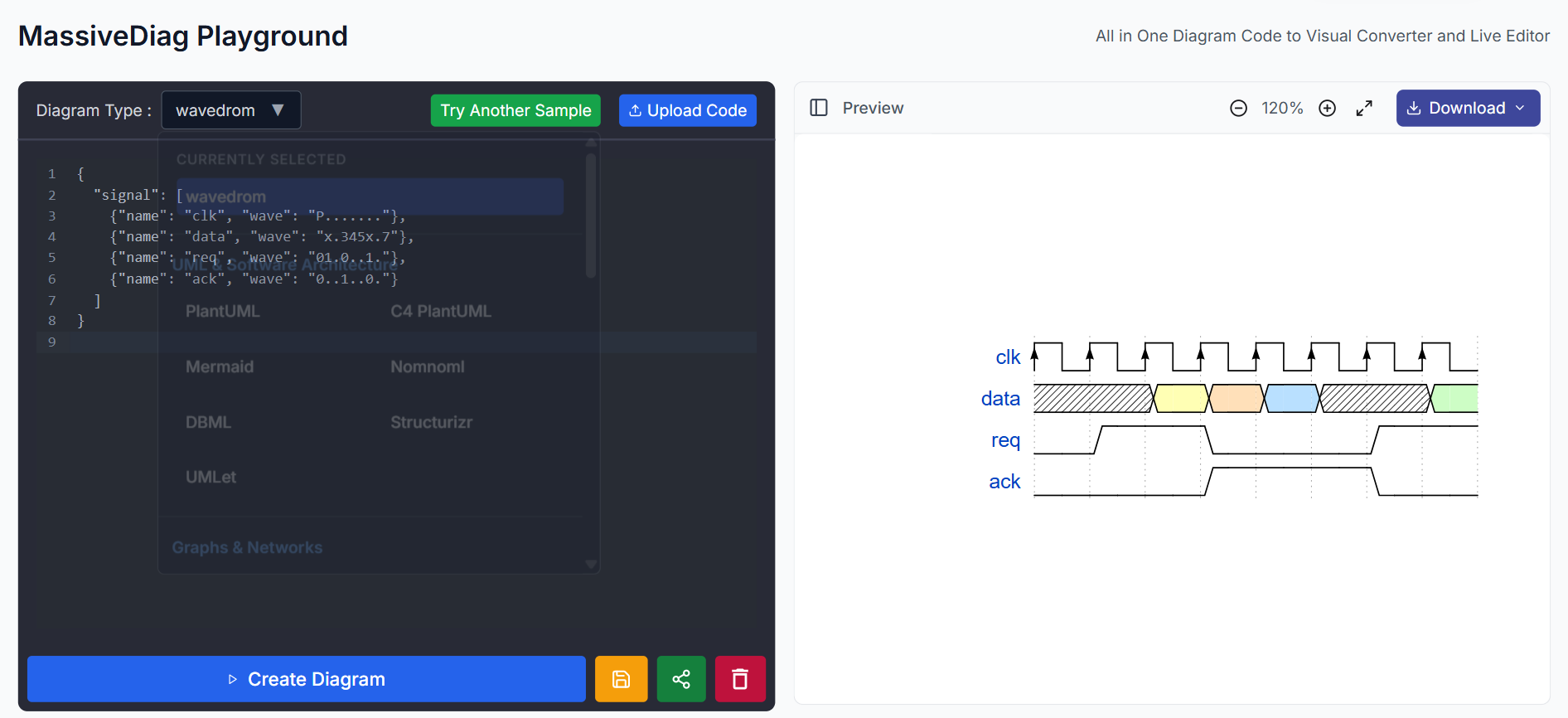
👉 Try MassiveDiag Playground for free now:
Try MassiveDiag Playground
2. What is WaveDrom?
WaveDrom is a simple, JSON-based language used to describe digital timing diagrams. It's widely used in electronics, embedded systems, and documentation to represent clock signals, data streams, control signals, and more. With WaveDrom, you can define signal transitions, timing relationships, and behavior across time in a readable and programmable way.
3. Supported WaveDrom Features
MassiveDiag Playground supports the full range of WaveDrom elements, including:
- Clock and signal waveforms
- Bus values and labels
- Signal grouping
- Phase delays
- Control signals (e.g., req/ack)
- Nested signal hierarchies
Whether you’re visualizing a simple waveform or a complex protocol, we’ve got you covered.
4. Example of a WaveDrom Diagram
WaveDrom Code
{
"signal": [
{"name": "clk", "wave": "P......."},
{"name": "data", "wave": "x.345x.7"},
{"name": "req", "wave": "01.0..1."},
{"name": "ack", "wave": "0..1..0."}
]
}
Generated Diagram

You can export the result as SVG, PNG, Word, or PDF—ready to use in documentation, presentations, or design reviews.
5. Getting Started with WaveDrom
To begin creating WaveDrom diagrams with MassiveDiag:
- Write or generate your WaveDrom JSON code.
- Go to the MassiveDiag Playground.
- Paste your code or upload a file.
- Select the diagram type (auto-detected in most cases).
- Click Create Diagram and watch it render in real-time.
6. How to Use WaveDrom in MassiveDiag Playground
Here's how the workflow looks:
- Generate Code – Use AI or write your own WaveDrom code.
{
"signal": [
{"name": "clk", "wave": "P......."},
{"name": "data", "wave": "x.345x.7"},
{"name": "req", "wave": "01.0..1."},
{"name": "ack", "wave": "0..1..0."}
]
}
Upload to Playground – Paste or drag-and-drop your code.
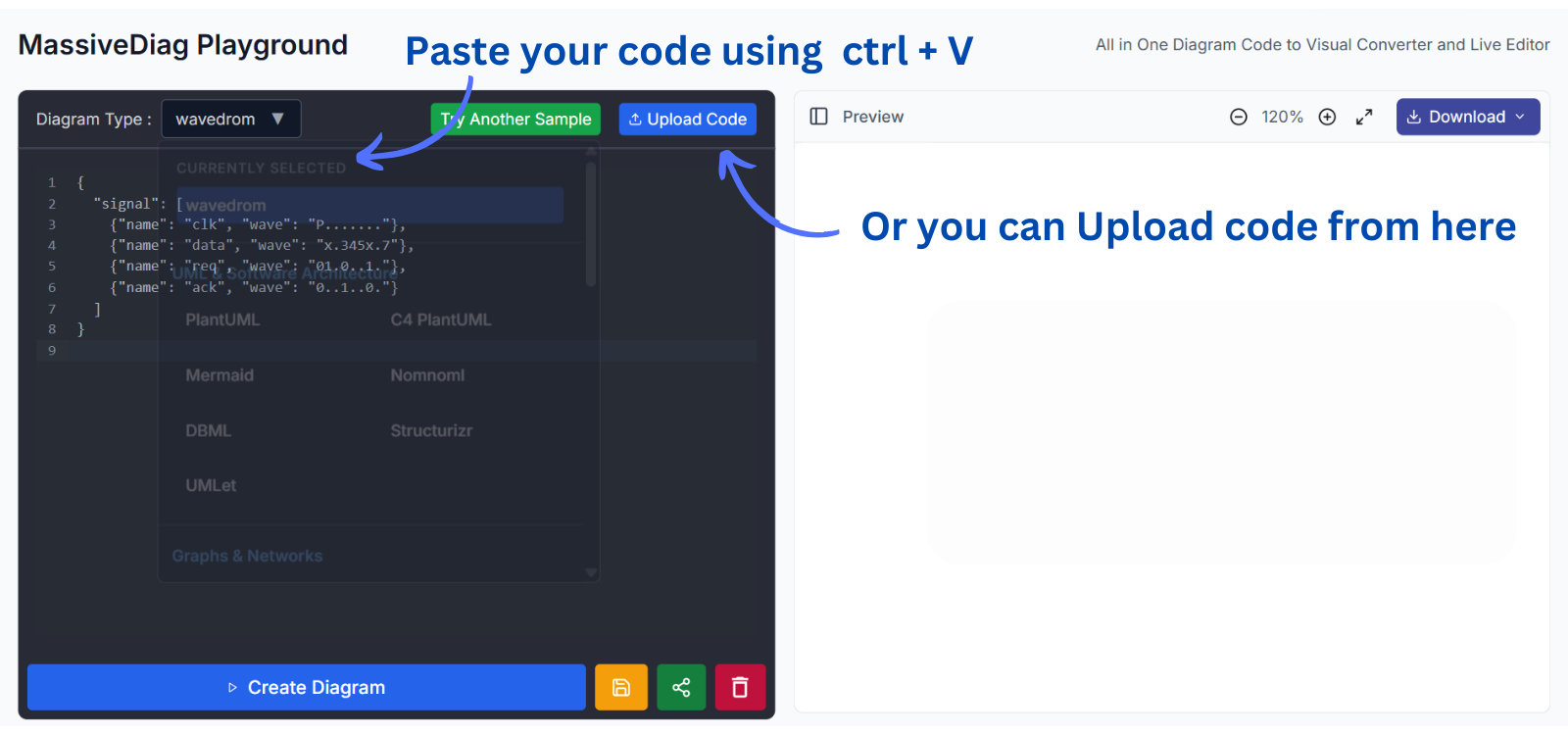
Auto-Detect Diagram Type – Or manually set it if needed.
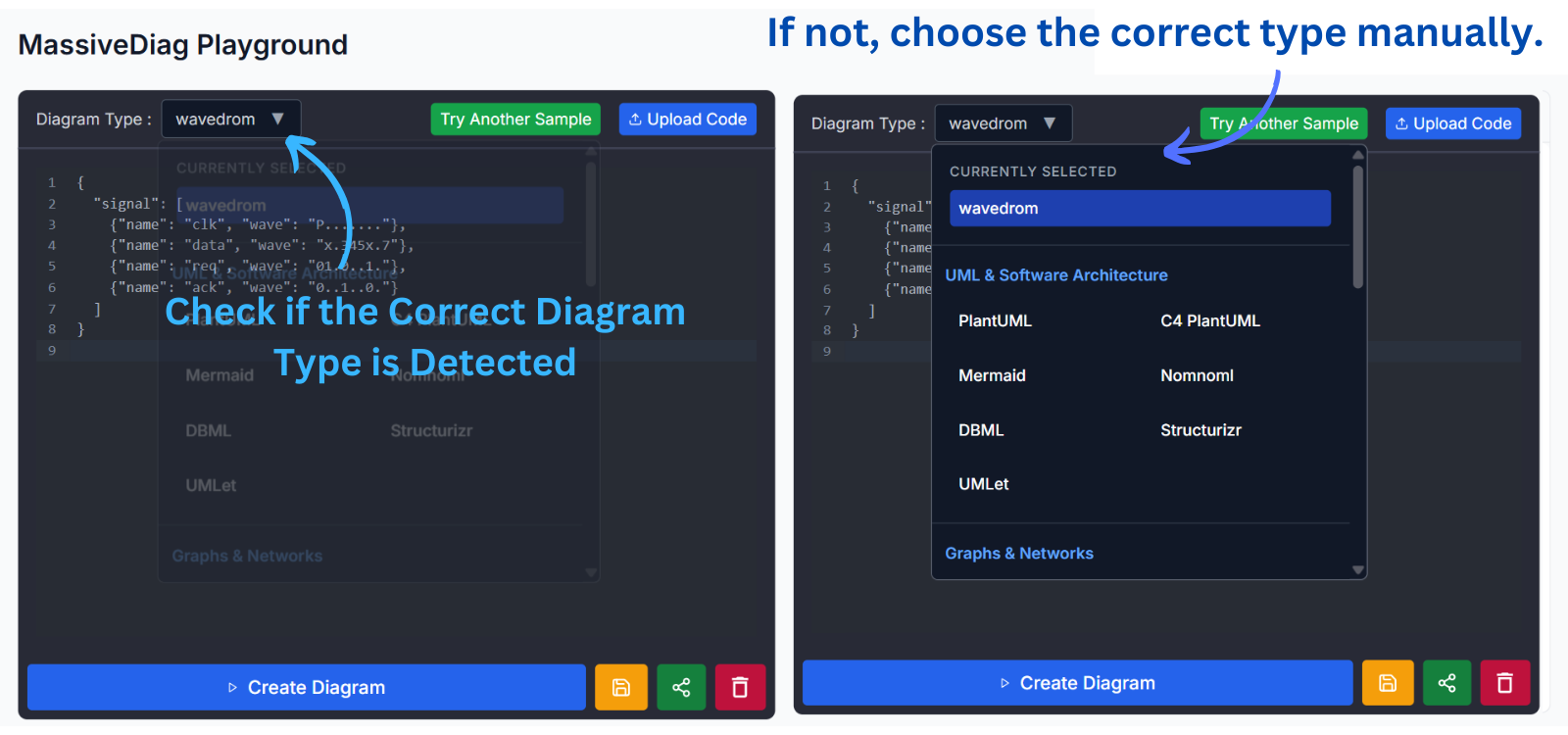
Create Diagram – Let the platform process the input.
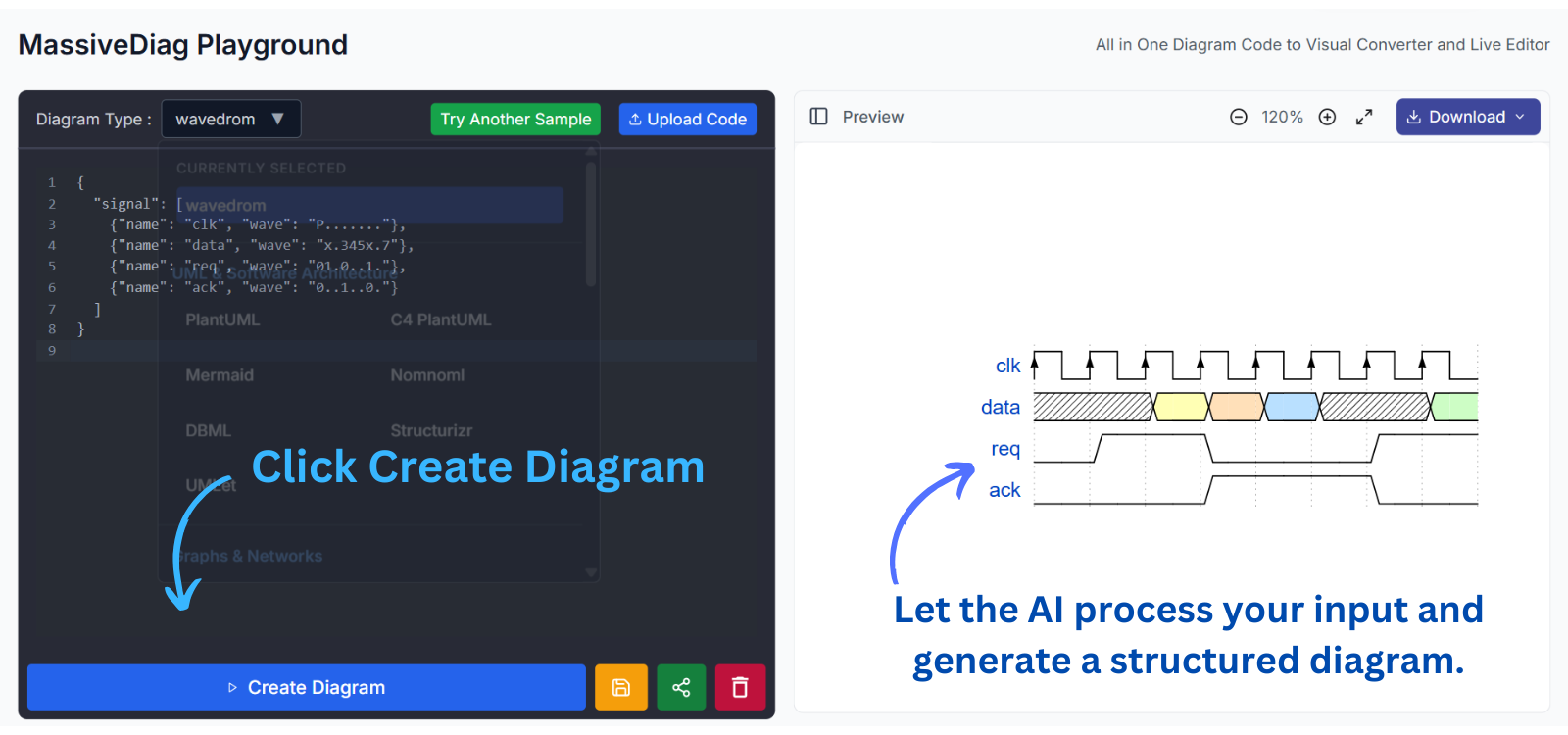
Download in Any Format – Export in SVG, PNG, Word, or PDF.
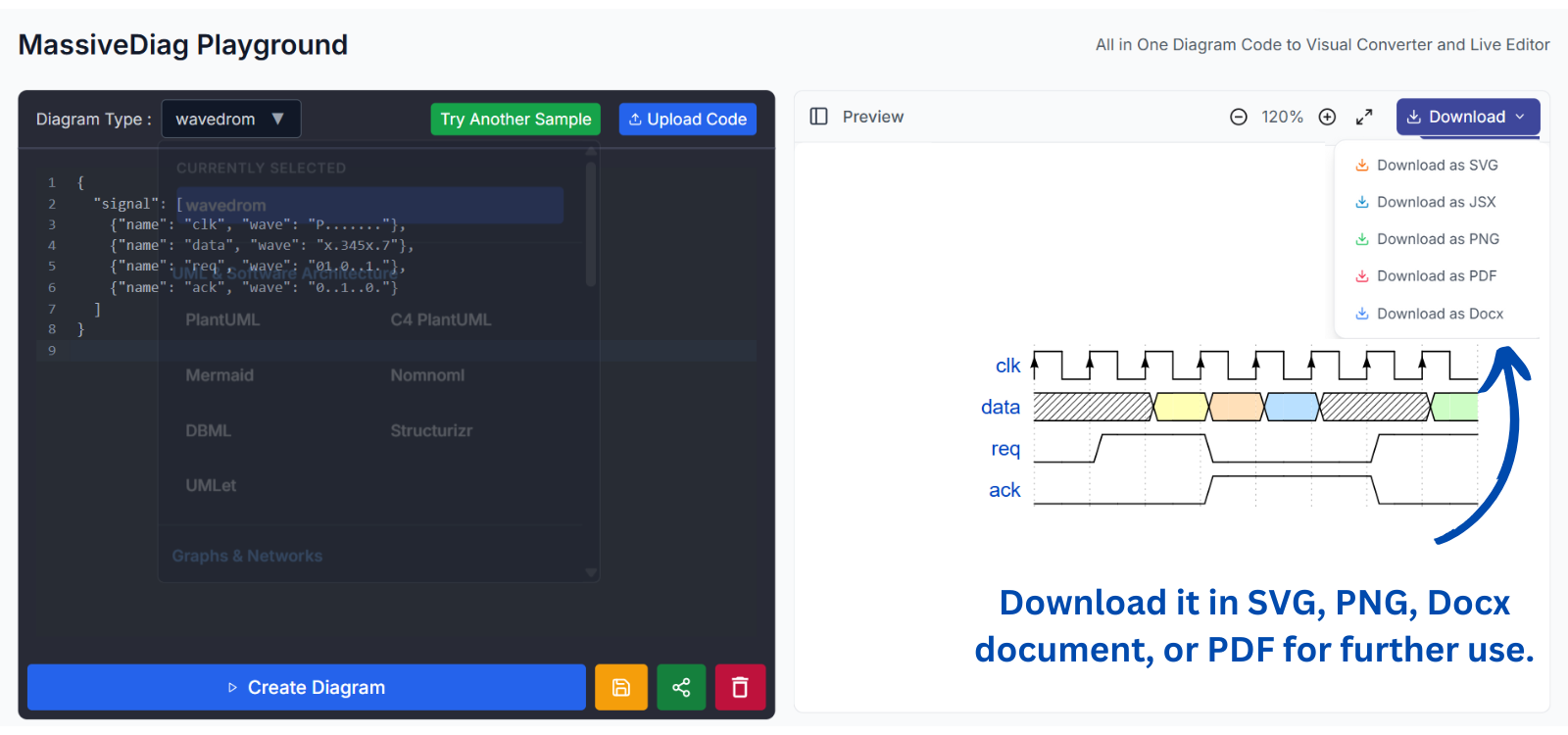
7. Practical Use Cases
- Hardware Documentation – Describe timing diagrams for ICs and embedded systems.
- Technical Specifications – Clearly show signal relationships in protocols.
- Educational Materials – Help students visualize timing concepts.
- Team Collaboration – Share signal flow diagrams in product documentation.
- Code Reviews – Include visual timing checks in engineering discussions.
8. Multilanguage Support
MassiveDiag Playground is global! The interface and documentation are available in:
- Spanish
- French
- German
- Italian
- Chinese
- Japanese
- Russian
- Arabic
- Portuguese
- Hindi
- Korean
- And many more!
Switch languages effortlessly to make collaboration easier across international teams.
9. Tips for Effective WaveDrom Diagrams
- Use clear signal names and consistent casing.
- Group related signals for readability.
- Add comments in your JSON to guide future edits.
- Preview and refine spacing with dots (
.) and timing indicators. - Use bus notation (
=x) for multi-bit values. - Label key moments using
phase,data, ornoteattributes if needed.
10. FAQ About WaveDrom and MassiveDiag
Q: Do I need to install anything to use MassiveDiag Playground?
A: Nope! It’s 100% browser-based.
Q: What export formats are available?
A: SVG, PNG, Word documents, and PDFs.
Q: Can I edit diagrams live?
A: Yes! You can tweak the code and see updates instantly.
Q: Is there a cost?
A: The platform is completely free to use.
Q: Does it support other diagram types besides WaveDrom?
A: Yes! It supports PlantUML, BPMN, Bytefield, Nomnoml, and more.
11. Conclusion
MassiveDiag Playground is the go-to solution for creating WaveDrom timing diagrams quickly, visually, and efficiently. Whether you're documenting hardware protocols or teaching digital electronics, this tool saves time and boosts clarity.
✨ Start diagramming today — for free:
Try MassiveDiag Playground